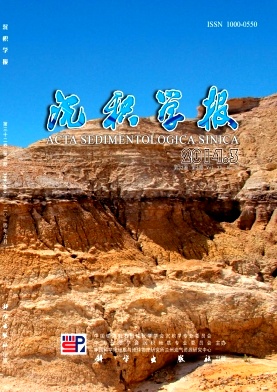Research on Geological Conditions of Shale Coexistent Energy Mineralization (Accumulation): Take the Qingshankou Formation in Upper Cretaceous, Songliao Basin for example
- Received Date: 2013-07-22
- Rev Recd Date: 2014-03-17
- Publish Date: 2014-06-10
-
Key words:
- Songliao Basin /
- Upper Cretaceous /
- shale coexistent minerals /
- mineralization accumulation
Abstract: Oil shale, shale oil and shale gas are the unconventional shale energy resources. They have already become domestic and foreign research hotspots, and brought about“shale revolution”. These mineral resources are closely related to organic rich shales. There is a connection and coexistent pattern in genesis among these mudstone mineral resources, but a big difference in metallogenic (accumulation) conditions. Thick dark mudstone developed in the upper Cretaceous Qingshankou Formation in the Songliao Basin. The distribution of strata is widespread with high abundance of organic matter, but the burial depth is of significant differences. Based on the previous studies, the organic matter content is very high in the Qingshankou Formation, and the kerogen type is I and II1. These geological conditions of this thick mudstone layer have the potential to accumulate the shale coexistent energy resources. In the southeast uplift of the Songliao Basin, it is initially thought that the Qingshankou Formation has a shallow depth (<1 000 m) and a low degree of organic thermal evolution (Ro: <0.7%), thus forming a better metallogenic place for oil shale. The shallow depth of organic rich shales maybe generate biogenetic shale gas due to microbial activities, and the weak compaction and abundant organic frameworks provide adequate space for shale gas reservoirs (porosity: 4%~14%) . From the eastern uplift to the central depression, the burial depth increased (>1 000 m) and the thermal evolution increased (Ro: 0.7%~1.2%). Organic matters mainly mature to over-mature and large quantity hydrocarbons were expelled, and they offered sufficient sources for shale oil and shale gas accumulation. Abnormal high pressure and hydrocarbon expulsion pore-creating to form well-developed reservoirs, emhancing the good conditions for oil shale and oil gas accumulation. Therefore, the energy of shale metallogenic(accumulation) regularity might be that, the southest uplift and some uplift areas of central transition zone are the potential accumulation belt of oil shale and biogenetic shale gas, and the large area of central transition zone is the accumulation belt of shale oil and pyrolysis shale gas, and the deepest central depression is the accumulation zone of cracking shale gas. These shale coexistent energy minerals are ringly distributed in the basin.
| Citation: | Research on Geological Conditions of Shale Coexistent Energy Mineralization (Accumulation): Take the Qingshankou Formation in Upper Cretaceous, Songliao Basin for example[J]. Acta Sedimentologica Sinica, 2014, 32(3): 593-600. |






 DownLoad:
DownLoad: